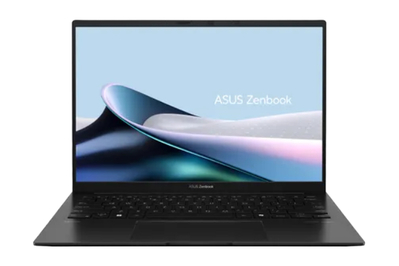Top pick
Recommended configuration
| Processor: | AMD Ryzen 7 8840HS | Screen: | 14-inch 1920×1200 OLED touch |
| Memory: | 16 GB | Weight: | 2.82 pounds |
| Storage: | 512 GB or 1 TB SSD | Tested battery life: | 14.5 hours |
Who these are for: If you need a thin and light, super-portable Windows laptop with long battery life to get you through a full day of work or classes, choose a Windows ultrabook. They’re powerful enough to do everything most people need a computer for, and they have great keyboards, trackpads, and displays. You can expect to pay between $900 and $1,300 for a great Windows ultrabook that will last you at least four years, though excellent budget options are available for around $800.
Where they fall short: Windows ultrabooks are in an odd place in 2024—many of the available options cost more than most people want to spend on a laptop, and they typically fall short of their promise of excellent battery life in a thin and light machine. We hope this situation will improve when laptops with new processors launch late this year. Ultrabooks also lack the processing power to play high-end games or handle demanding tasks such as professional video editing or 3D modeling.

Why we like this one: The Asus Zenbook 14 OLED (UM3406) is a fantastic value. It has the best combination of what makes an ultrabook great, offering fast performance, all-day battery life, a quality keyboard and trackpad, and a spacious, vivid screen, all in a thin and light body. At 14 hours, the Zenbook 14 OLED has the longest battery life of any Windows laptop we’ve tested so far in 2024. But compared with more expensive options, the Zenbook 14 lacks a 360-degree hinge and a fingerprint reader, its glossy touchscreen is reflective, and its speakers are mediocre. We recommend the UM3406HA-WS74T model with 512 GB of storage, but the UM3406HA-PS76T model with 1 TB is also a good option if the cheaper one is unavailable.
We don’t recommend Snapdragon laptops for everyone just yet. After testing most of the newly released laptops with Qualcomm’s Snapdragon X processors, we found that the Microsoft Surface Laptop (7th Edition, 13.8 inch) is an all-around excellent compact laptop with exceptional battery life. But we recommend it only if you can tolerate that some apps and peripherals simply won’t work until a developer builds an Arm version.
Because these processors don’t use the x86 architecture that has been standard on Windows PCs for decades, we’re currently in a transition period similar to when MacBooks moved to Apple Silicon processors a few years ago. Microsoft’s app translation layer, Prism, runs x86 apps moderately well, but it’s likely at this stage that you’ll run into at least one thing that you simply cannot do. Also as of this writing, the most hyped (and most criticized) Copilot+ AI feature, Windows Recall, has not yet launched.
Read more about the Asus Zenbook 14 OLED and Qualcomm’s Snapdragon X laptops in our full guide to ultrabooks.





